Creating custom fish tank hiding spots like 3D printed aquarium cave decorations not only enhances the aesthetics of your aquarium but also provides essential shelter for aquatic life. Whether you have betta fish, cichlids, plecos or shrimp – having hiding spots for a fish tank is crucial for their health and well-being. This guide will walk you through the best practices for designing, printing and selecting materials for fish tank hiding spots that are safe and functional.
Why Do Fish & Shrimp Need Fish Tank Hiding Spots?
Reducing Stress & Mimicking Natural Environments
In the wild, fish and shrimp rely on rocks, driftwood and plants for cover. In captivity, providing aquarium hiding places can significantly reduce stress and improve their quality of life. Hiding spots for betta fish, for example, are essential as bettas enjoy resting in secluded areas.
Breeding & Protection for Fry
Certain species, like cichlids and shrimp, need secure hiding places for fish in an aquarium to breed successfully. Fry and juvenile shrimp require small, protected spaces such as cherry shrimp hiding places to grow safely without the threat of predation.
Establishing Territory & Reducing Aggression
Aggressive species, such as cichlids, benefit from cichlid hiding spots, as these structures help divide territories and reduce conflicts. Betta hiding spots also help prevent unnecessary stress in tanks with multiple fish.
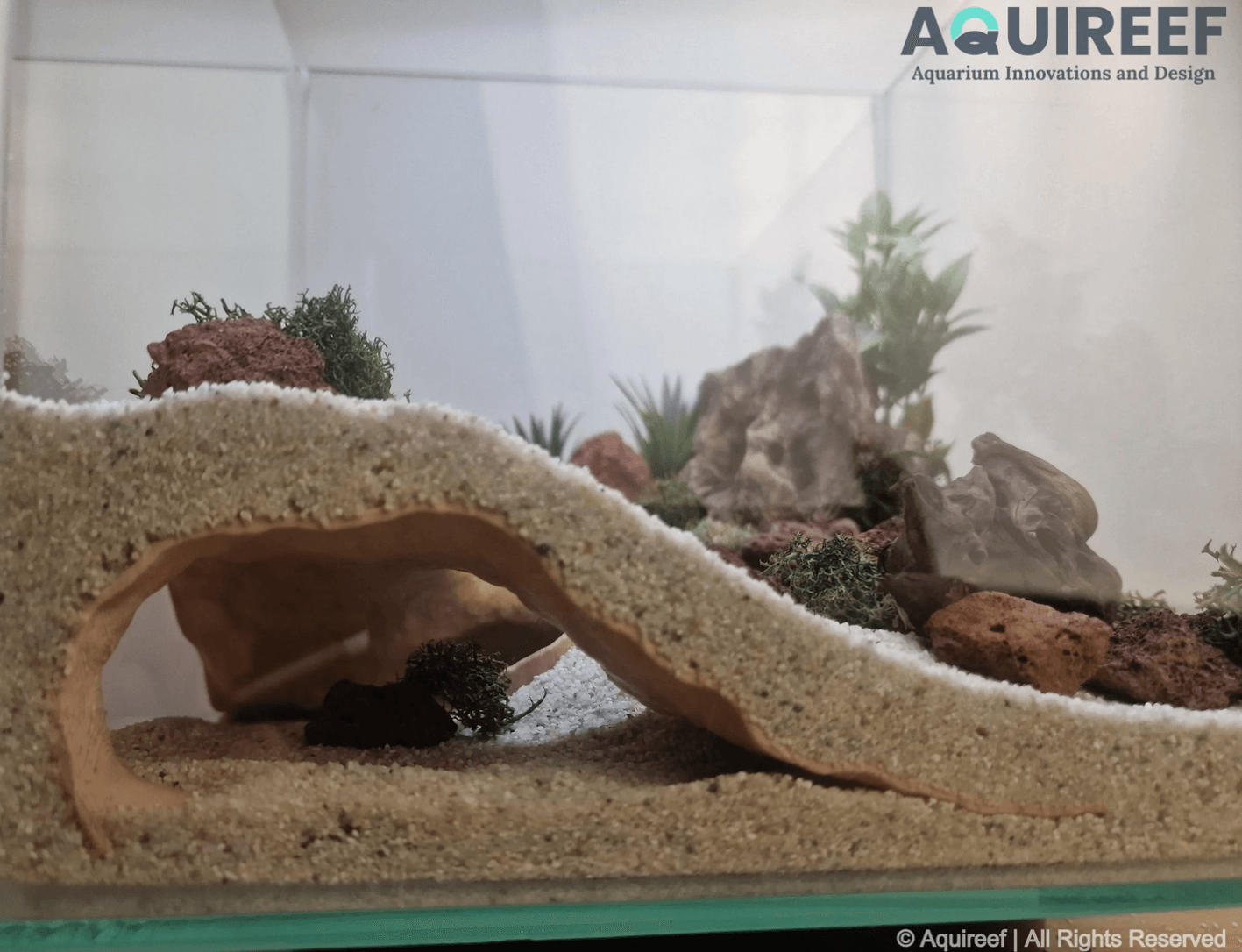
Choosing the Right 3D Design Software
The best software depends on your skill level and the complexity of your design:
Tinkercad
(Beginner level) – Ideal for simple aquarium fish hiding places with basic geometric shapes.
- ✅ Easy to learn, browser-based;
- ✅ Ideal for simple cave structures and basic geometric designs;
- ❌ Limited in advanced sculpting features.
Fusion 360
(Intermediate level) – Best for more complex fish tank hiding places that require precise measurements.
✅ Great for parametric modeling and precise measurements.✅ Allows for complex organic shapes and internal structures.✅ Offers some ability to work with meshes.✅ The Forms feature enables the design of more organic structures.✅ Recommended choice for most designs due to its balance between functionality and ease of use.
Blender
(Advanced) – Excellent for highly detailed, organic hiding spots for a fish tank that mimic natural rock formations.
Selecting the Best Materials for Aquarium Safety
Choosing the right filament for 3D printed aquarium caves is crucial for durability and fish safety.
PLA (Polylactic Acid)
- Pros: Easy to print, biodegradable, and commonly available.
- Cons: Can degrade over time in water, especially in high temperatures.
- Best For: Temporary custom fish tank decorations or low-maintenance tanks.
Good quality PLA for a reasonable price here (Amazon Affiliates link).
PETG (Polyethylene Terephthalate Glycol-Modified)
- Pros: More water-resistant than PLA, stronger, and safe for long-term use.
- Cons: Slightly more difficult to print than PLA.
- Best For: Long-lasting aquarium hiding spots that won’t break down over time.
Good quality PETG for a reasonable price here (Amazon Affiliates link).
For more detailed info on how to choose the right filament and what are the key differences between them check out my previous post – 3D Printing Materials: Safe and Unsafe Choices for Aquariums and Terrariums.
Designing Safe & Functional Aquarium Caves
When creating hiding places for fish in an aquarium, it’s important to prioritize both aesthetic appeal and fish safety.
Entrance Size & Safety
- Ensure openings are large enough for your fish to enter and exit safely.
- For betta fish hiding places, a diameter of at least 3 cm is recommended.
Cave Height & Placement
- Keep caves 5-7 cm high to ensure they fit well in planted aquariums.
- Position cichlid hiding spots and betta hiding spots near plants or rocks for a natural feel.
Weight & Sinking Considerations
- Use minimal infill (5%) to prevent floating issues.
- Increase infill to 70% for heavier aquarium hiding places that need to stay submerged.
Real-World Aquarium Cave Ideas
- Cichlid Breeding Caves: Small, enclosed areas that mimic natural rock crevices.
- Pleco Hiding Caves: Long, tube-like structures, providing a hiding and secure place for pleco fish.
- Shrimp Hiding Tubes: Narrow, vertical structures perfect for cherry shrimp hiding places.
- Betta Resting Caves: Small, open-top domes that act as betta fish hiding places.
- Rock Formations: Natural-looking aquarium fish hiding places that blend into your tank’s ecosystem.
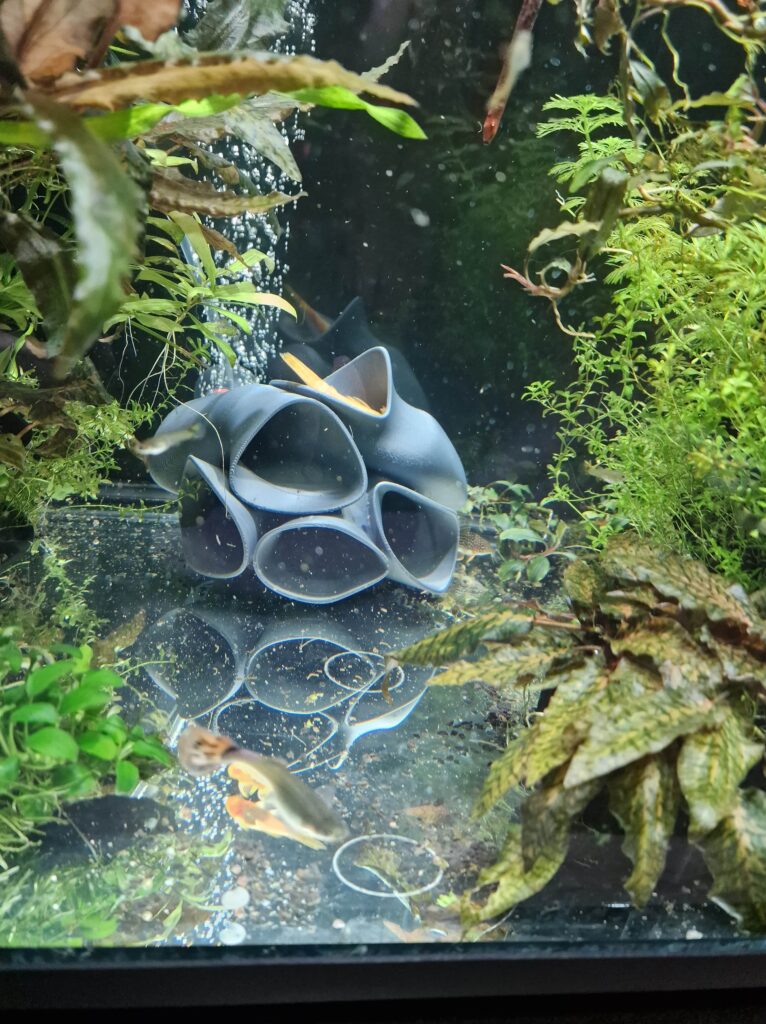
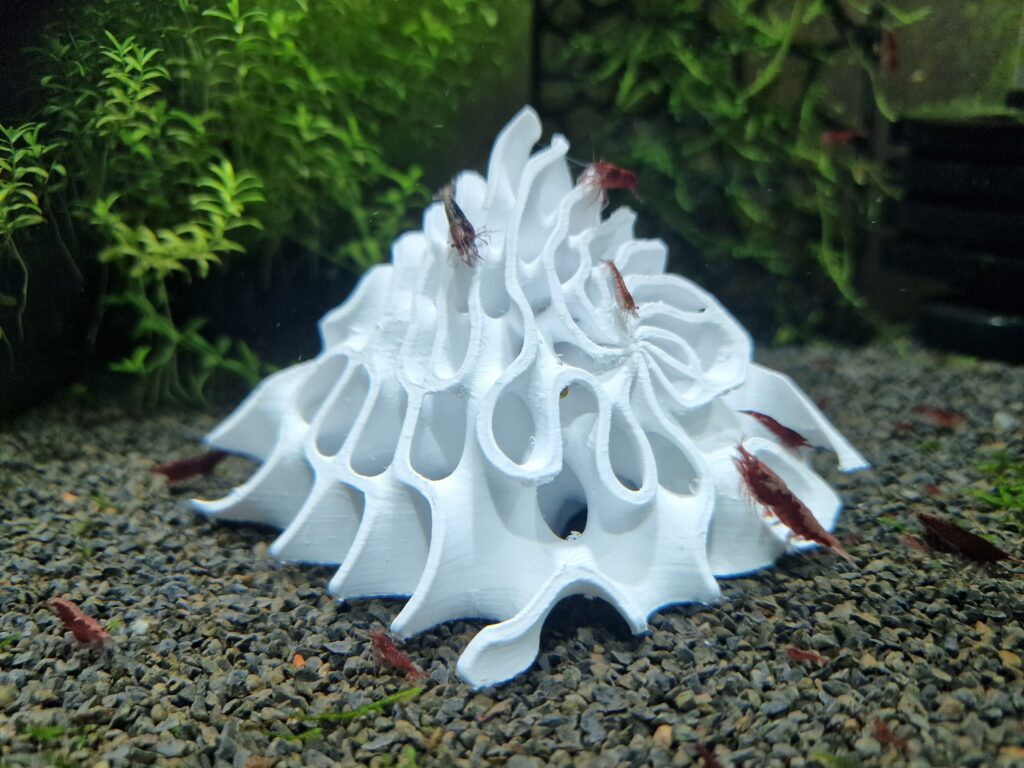
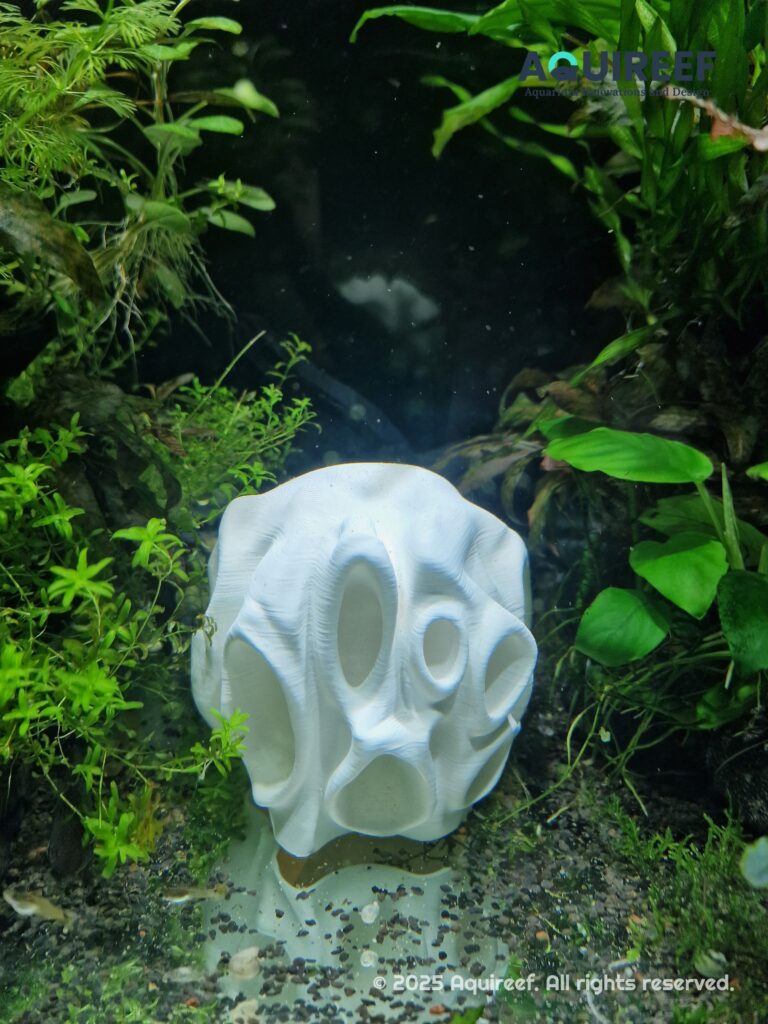
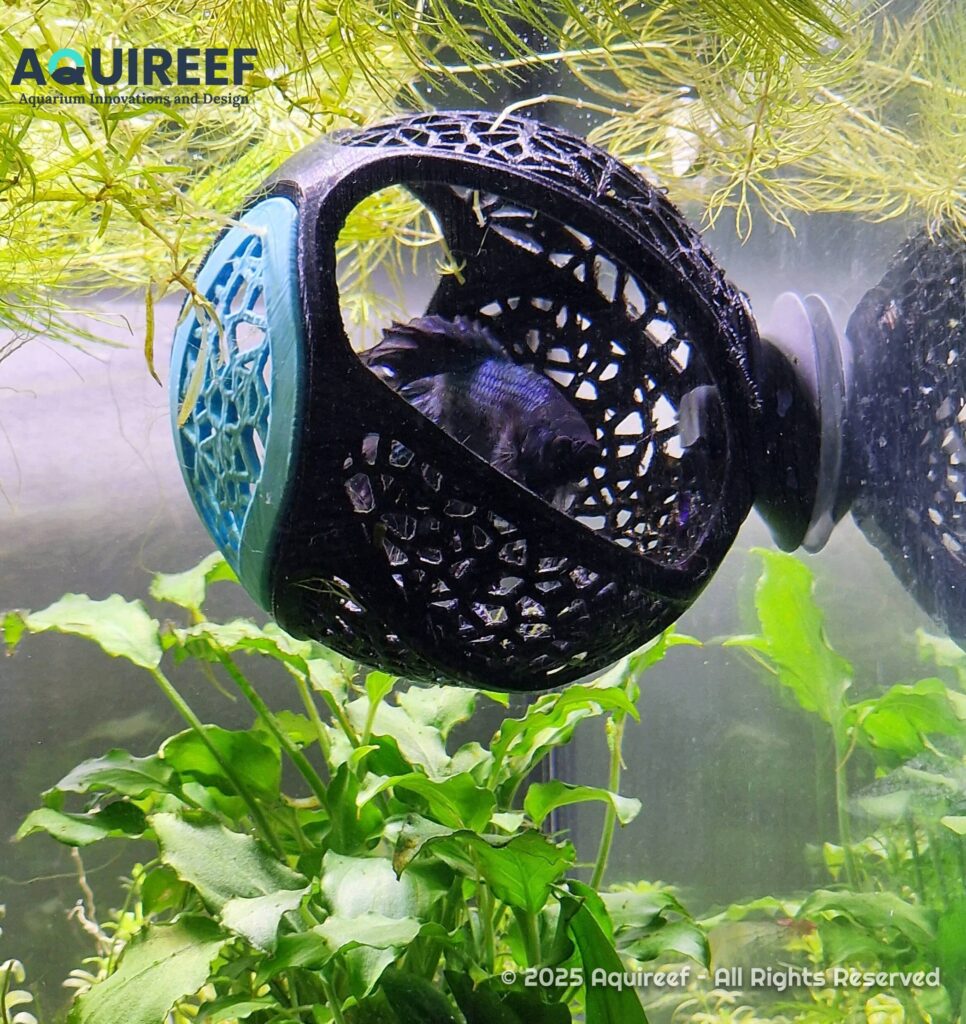
Join the Discussion!
💬 What’s your experience with 3D printing aquarium caves? Have you designed custom hiding spots for a fish tank, do you have any favorite materials or techniques? Drop a comment below and let’s discuss the best ways to create functional and safe aquarium fish hiding places! 🐠💡
